How Tesla is lagging behind competitors without going outside EPA rules
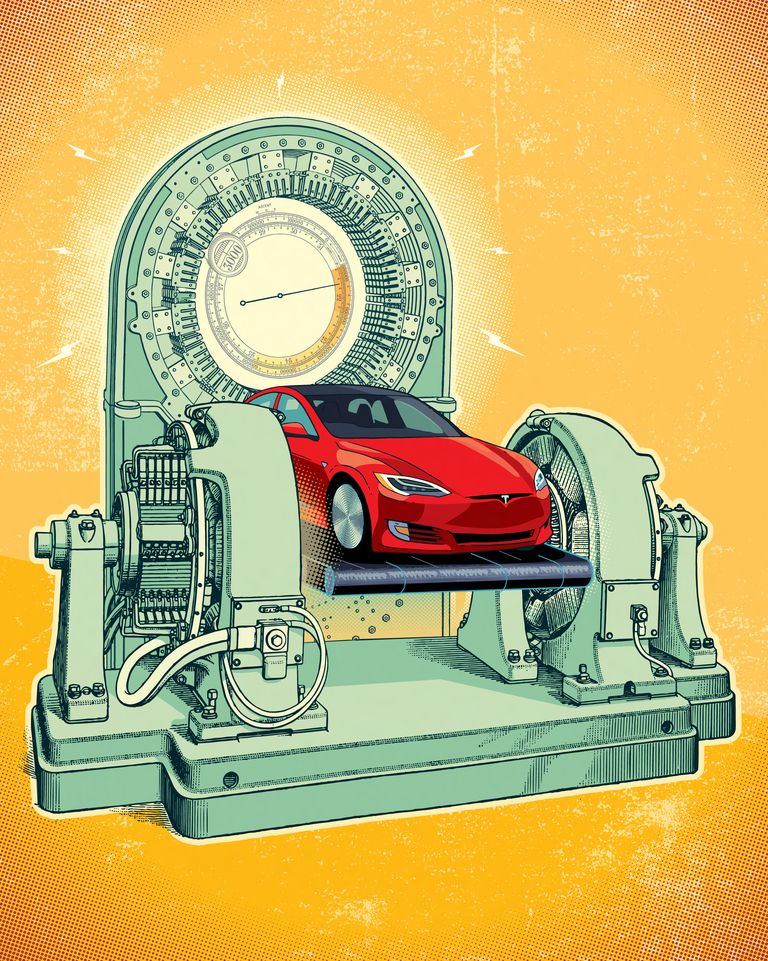
The crowd of competitors is getting close to the Tesla Model S's 412km range. The Porsche Taycan falls between 309 and 327 km. Audi e-tron - 328 to 351 km Jaguar I-Pace is 377 km away. The Chevy Bolt EV goes head-to-head with a range of 417 km.
There is only one problem. The Tesla Model S earned this certification from the US Environmental Protection Agency (EPA) eight years ago. Today, by US EPA standards, the Tesla model with the longest travel distance, the Model S Long Range Plus, can cover an incredible 647 km.
And in terms of distance traveled by electric vehicles, Tesla appears to be out of competition. Despite the billions injected into electric vehicle development programs, established carmakers have not been able to achieve this range - and winning the game remains key to winning buyers. So how does Tesla do it?
This was especially interesting to us, since our own tests of Tesla on the highway with a permitted speed of 120 km / h showed that the car fell short of these figures by 27%, and all other cars we tested by 22%. With all of this in mind, and the recent fuel economy and emissions scandals at Ford, Hyundai-Kia and Volkswagen, we couldn't just take Tesla's word for it. Instead, we used the help of information provider IHS Markit to comb through documentation from USEPA, the SAE automotive engineering community, and automakers. In addition, we tested the cars ourselves to understand how Tesla achieves such large numbers. The dominance of the company in this area comes down, by and large, to three factors. Let's analyze them separately.
Adjustment factor
If you dig into the specifics of calculating the mileage of electric vehicles on a single charge, then a rabbit hole of technical documents crammed with details appears quickly - like, for example, the 32-page J1634 standard from SAE, which describes the tests of mileage and efficiency. To summarize, then: a dynamometer is tied to an electric vehicle - something like a treadmill for cars - and the tests are continued, which end only when the battery runs out to such an extent that the car cannot maintain the required speed.
This procedure uses the US EPA “urban cycle” (average speed of 32 km / h over 12 km with 18 stops) and “highway cycle” (average speed of 77 km / h over 17 km). The same cycles are used to test the fuel economy of all passenger cars. During both cycles, the car is driven very "gently" - the most aggressive acceleration picks up a speed of 97 km / h in 18 seconds. Between urban and highway driving cycles, the test maintains a constant speed of 90-100 km / h to discharge the battery. The US EPA knows that these low speed tests do not reflect real-world conditions, so each number that represents the maximum mileage of the final product is multiplied by a correction factor to give a more realistic and consumer-like result.
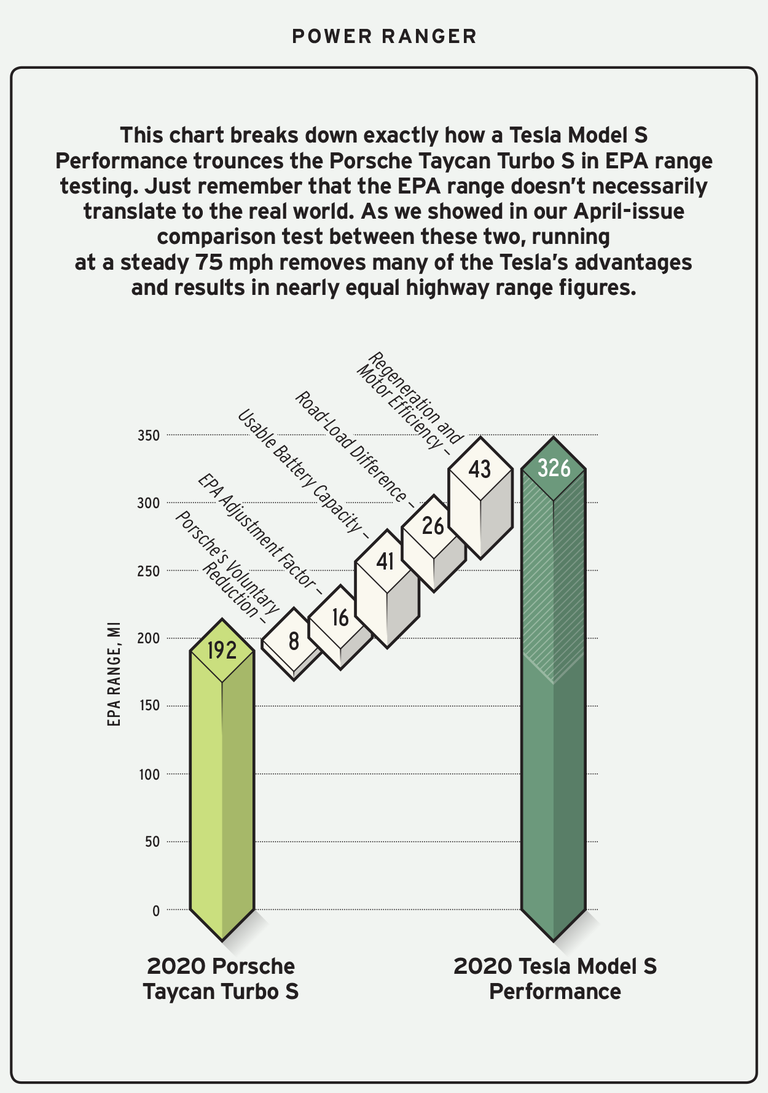
Tesla Model S Porsche Taycan Turbo S :
Porsche Taycan Turbo S 2020 : 192
Tesla Model S 2020 : 326
:
- 8 – Porsche,
- 16 – ,
- 41 – ,
- 26 – ,
- 43 – .
And here the fun begins. The default adjustment factor reduces the total vehicle mileage advertised to customers by 30%. So if a car goes 300 km in a dynamometer test in an urban cycle, it gets an urban rating of 210 km. However, the USEPA allows automakers to drive three additional driving cycles and use the results to earn a better tweak factor. Today, only Tesla and Audi are using this strategy, and Tesla is gaining the greatest advantage. Its adjustment ranges from 29.5% for the Model 3 Standard Range Plus to 24.4% for the Model Y Performance. If Tesla had used the standard 30% adjustment factor, then the Model Y Performance's total advertised mileage would have dropped to 470 km.But because Tesla takes advantage of the US EPA's alternative methodology, the company's car boasts a range of 507 km.
All of this is within the rules. Tesla has been doing this the longest of all the manufacturers, so it's no surprise that she figured out all the tricks to maximize her EPA numbers. The double test method emerged during the 2008 US EPA's fuel economy revision. Initially, the agency wanted all cars to undergo a five-cycle test, but automakers complained that it was too difficult to arrange, and the US EPA relaxed the requirements. The agency then came up with a way to convert two-cycle test results into five-cycle test results, and today many automakers are playing this two-method game with their gasoline cars.
However, in the case of EVs, the US EPA settled on a single 30% adjustment factor in 2011, when there were still too few EVs on the market to statistic. The agency says that it initially calculated this figure based on Toyota Prius tests, and later, in 2015, having confirmed the correctness of this estimate, decided not to change it.
When we asked the US EPA how these mileage values should correlate with travel in the real world, we were told that one of the main goals of fuel economy labeling was to enable people to compare cars that use incomparable energy sources - what the label says copes. However, we believe that in the still emerging market for electric vehicles, it is important to obtain mileage values that can be compared with the mileage of other cars, as well as with their mileage in the real world. The alternative correction method makes comparison difficult and we are not convinced that it gives better results for driving in the real world, especially at realistic road speeds such as 120 km / h - this is the number we use to calculate road efficiency and range.
Large batteries
Perhaps this is obvious, but the larger the battery capacity, the more mileage should be on a single charge, and Tesla has the largest batteries so far. In 2012, when the Model S came out, Tesla offered 85 kWh batteries. Today, customers can order a 15% larger battery with 98 kWh. Among the less expensive electric vehicles, the Model 3 and Y with a 75 kWh battery lead.
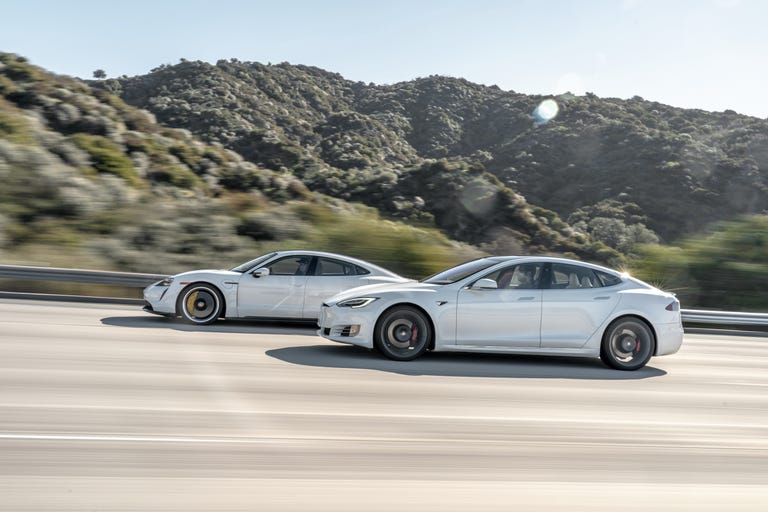
2020 Porsche Taycan Turbo s and 2020 Tesla Model S
What is not always obvious is what percentage of the maximum theoretical battery capacity can be used. To protect batteries from premature aging, electric vehicles never fully charge or discharge them. Some manufacturers disclose the total capacity, some write useful energy, some both. Many people hide these details. For example, after launching the Taycan, Porsche claimed a battery capacity of 93.4 kWh, close to the Model S. This made the Taycan's low mileage look even weirder. But it turns out that the Taycan has only 83.7 kWh of available power - 15% less than the Model S.
Based on incomplete data, it can be concluded that Tesla allows cars to use a higher percentage of battery power than other manufacturers. This appears to be partly because the company shifts some of the responsibility to the driver for choosing how much to charge the batteries, noting that charging above 90% should only be done before travel, not daily.
Efficiency gain
Tesla's largest and most fully charged battery pack contains energy equivalent to just 11 liters of gasoline. The key to getting more mileage is using less electricity to propel the vehicle, and returning as much energy as possible by braking electric motors as the driver takes their foot off the accelerator pedal during multiple decelerations in USEPA cycles. Tesla's aggressive recuperation gives it a 13% improvement in range over the Porsche Taycan - the latter only turns on recuperation when the driver applies the brake. This is part of Tesla's holistic approach to efficient driving, which also includes the ability to roll downhill with less friction than the competition.
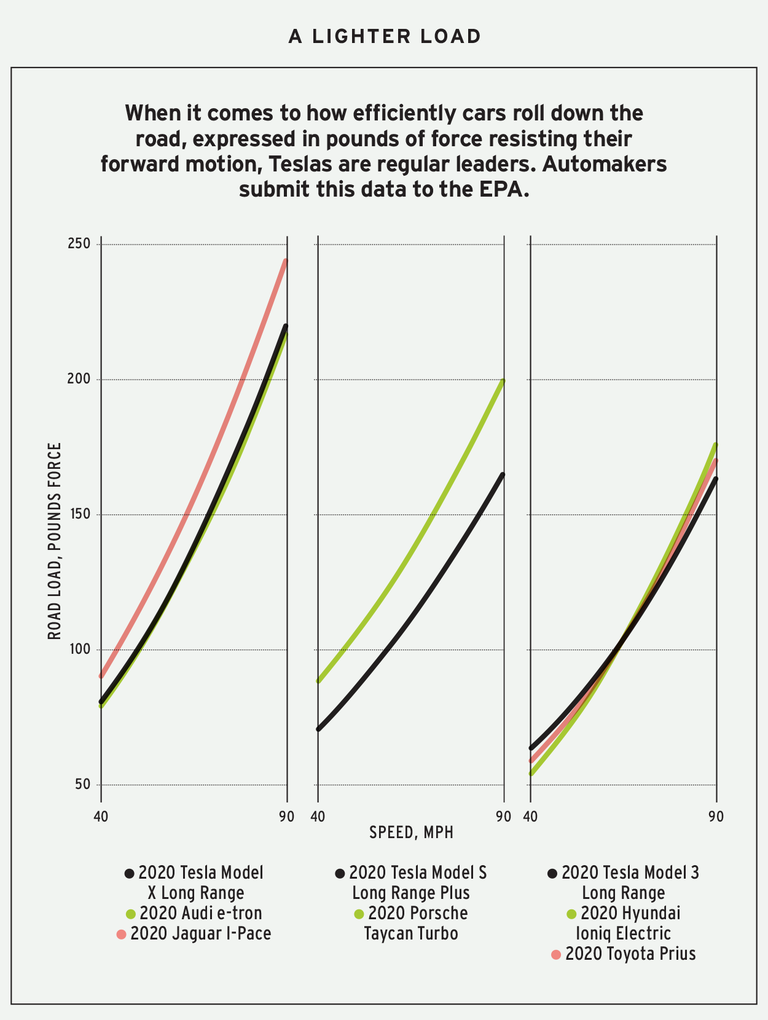
: , , , Tesla . .
Also over the years, Tesla has made significant changes to its electric motors to improve efficiency. In 2015, it introduced all-wheel drive models, adding a motor to the Model S's front axle, which was previously only rear-wheel drive. The second motor and axle add weight and friction, but the all-wheel-drive Model S 85D stretched the USEPA's measured range by 8 km compared to the rear-wheel drive. How? As in the case of an internal combustion engine, it will be more efficient to turn a low-power motor with a large load than a powerful motor with a low one. Model 85D with two 188 hp motors uses only one of them, unless the driver needs to accelerate very much - despite the fact that the rear-wheel drive model was spinning the engine at 362 hp. constantly.
Early four-wheel drive models used two induction motors that use oscillations of electric current to create a rotating magnetic field that spins the motor. For the 2019 models, Tesla switched to a more efficient front permanent magnet synchronous motor on the Model S and Model X. This, along with other minor tweaks, increased the range of the Long Range variants by 10%, to 595 km for the Model S and 523 km for the Model. X.
With the new Model S Long Range Plus, the range has been increased to 647 km through further improvements. Among them: the seats, battery and motors lost a total of 63.5 kg, the wheels became more aerodynamic, the rolling resistance of the tires was reduced, the mechanical oil pump at the rear engine was replaced with an electric one. So Tesla could remain the leader in cruising range for another eight years.
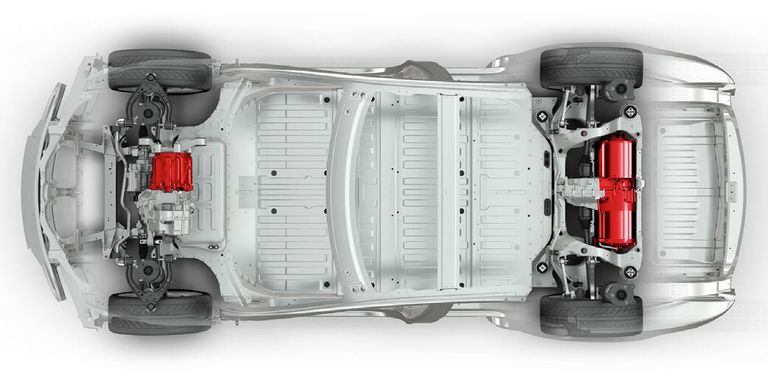
Lie detector test
Range and efficiency tests are carried out on a dynamometer, which must be calibrated to match the resistance of the rollers to what is happening on the road. The total force that prevents the vehicle from moving is called the road load. It includes aerodynamic drag, tire rolling resistance, and transmission friction.
The road load is measured while the machine is rolling by inertia as it decelerates from about 130 km / h to about 15 km / h. The time it took for the deceleration to occur is used to calculate three coefficients in the quadratic equation representing the pounds of force that prevents the vehicle from moving forward at a given speed. These coefficients determine the resistance of the dynamometer during performance and range tests.
SAE's 39-page J1263 document naturally contains a bunch of recommendations for this procedure, including requirements for tire tread depth and vehicle pre-mileage, so that test vehicles can simulate real-life driving correctly. However, automakers can, and build the best performing cars - with the slipperiest bearings and the best brakes - and run them on the smoothest surfaces.
Hyundai got into trouble for this in 2012. The company used highly optimized tires and specially selected results that were not achievable in the real world. In 2014, the US EPA fined her $ 100 million and downgraded the fuel economy ratings for most 2012 and 2013 Hyundai and Kia models.

Lie detector for the dependence of road load on speed. Black indicators - Car and Driver magazine test results; green - Tesla specifications according to US EPA.
Naturally, we wanted to selectively measure Tesla's best-in-class road load, so we ran deceleration tests for the Model 3, Model Y and Model S. Although we used a less than ideal 2km stretch of road, and our cars were not specifically prepared, the results obtained did not differ from the declared ones by more than a few percent. This is a clear indication that the company is not trying to cheat on deceleration tests and is able to optimize efficiency by actually outperforming the competition.
Although Tesla, compared to most automakers, willingly shares the range for different combinations of cars on offer - it is obliged to report only data on the most popular options - sometimes it is silent about something. For example, from the road load data it sent to the US EPA, it appears that the 21 "wheels for the Model S Long Range Plus will reduce the range by almost 130 km. You won't find that data on the company's website.